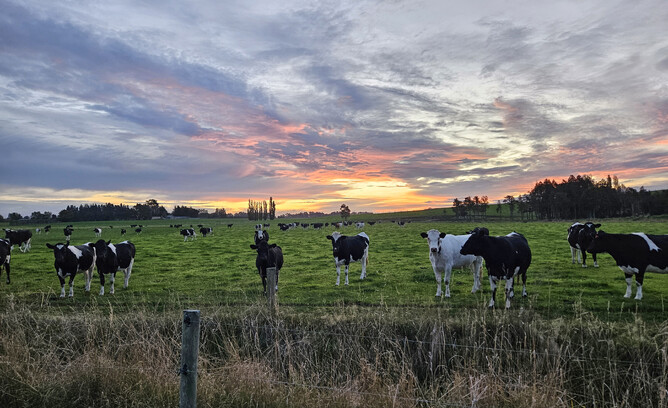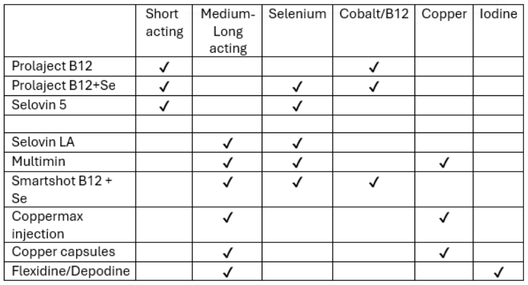The most challenging growing period for livestock is nearly upon us… winter.
Preparing dairy youngstock for wintertime is crucial for maintaining good growth rates and overall health. Here’s a few things to consider when thinking about your plans for your heifers this wet season:
1. Growth
Split your main mob into two groups: heavier calves and lighter calves. This will help reduce competition and you can feed more accurately according to their demands.
Weigh stock frequently, especially if animals are underperforming, so you can keep a close, accurate eye on their growth rates.
Draft off any that are really not performing well and preferentially feed these in a small group with minimal competition.
If your youngstock are unlikely to maintain good growth rates during the winter months (due to diet, nutrition changes, transport, transitions, weather challenges, etc.), it's a good idea to grow them above target in autumn to provide a buffer for those problematic months and prevent winter setbacks. This will help minimise the impact of reduced growth rates on their target live weights at mating and beyond.
2. Health treatments
Trace elements
Consider how frequently your youngstock can be yarded over the winter period. If regular yarding won’t be achievable, are long-acting supplements more suitable?
Testing trace elements in autumn is a good way of knowing exactly what their levels are before heading into winter, which can aid decision-making for wintertime and help guide an appropriate supplementation strategy.
Drenching
R1 heifers require regular combination drenches throughout autumn for internal and external parasite management.
A combination drench is essential for youngstock – don’t use single actants. Use a combination that includes levamisole to action against Cooperia in autumn, and a mectin like abamectin for combating Ostertagia and clearing up lungworm.
Frequent drenching should be maintained if wintering on grass. Drench requirements are reduced if wintering on crop.
Vaccinations
Maintain a preventative vaccination schedule for diseases like Lepto, Salmonella, and BVD, as well as clostridial diseases. Plus Rotavirus for R2 heifers.
Unvaccinated animals may need two shots, a primary shot and a sensitiser 4-6 weeks later. Older heifers may require just one annual booster shot if the primary programme has already been completed.
3. Teat sealing
Teat seal your R2s to significantly reduce your calving mastitis rates.
Book this in with us – if changing grazing locations for winter, choose a date when you’ll have access to the best facilities.
4. Crop transition
Transitioning
Good transition practices onto winter crop is essential for youngstock, just as it is for your other animals. Introduce new diet gradually to allow gut bacteria to adjust. It’s recommended to increase by 0.5kg dry matter every second day for young heifers, or until they are eating their allocation properly.
Feed supplementary baleage or hay to balance nutritional requirements. In heifers this also helps to maintain rumen development.
Never put stock onto crop hungry – feed the supplement feed first.
Potential issues
Difficulty eating bulbs: Some young animals can take a while to figure out how to eat the bulbs properly when first grazing winter crops. Take care not to leave too much bulb (beet or brassica) behind with each new break. The fast learners will go back and gobble up excess bulb before the rest have caught on – risking major gut aches and acidosis.
Rumen development: A heifer’s rumen is still developing, so appropriate energy, protein and fibre are needed to help it mature. Rumen capacity is a vital factor in future adult performance, so it’s important to develop your youngstock’s rumens properly.
Growth requirements: Not only are their rumens still developing, but the rest of a young heifer’s body is also growing flat out too, especially their muscles and bones. Crops alone won’t meet all their nutritional requirements; their diet needs energy, protein, fibre, fat and minerals (the most important ones for youngstock are selenium, cobalt, copper, calcium, phosphorus and iodine). Nutritional insufficiencies will vary between farms and crop types, so different supplements may be required to help balance them out.
Feeding over winter
Once your mobs have adjusted to the crop, there are two important questions you must ask yourself: Are they getting fed adequately overall? And are they getting enough of everything that they need? It is common in winter to hear farmers are frustrated that their youngstock are being fed plenty but aren’t growing well. Low growth can be hard to pick up early, as the stock tend to be full and content, but weight gains drop off. That’s when you need to investigate if they're getting everything they require nutritionally, and make changes to properly balance their diet. A bit of planning now, to ensure your heifers will have all the elements for a growth-focused diet, can go a long way.
Good winter planning will ensure your heifers are set up for long-term success!
This has only touched the surface of these key factors, but hopefully it provokes a few ideas. Get in touch with your KeyVet if you have any questions or would like to delve into more detail about anything mentioned above.



